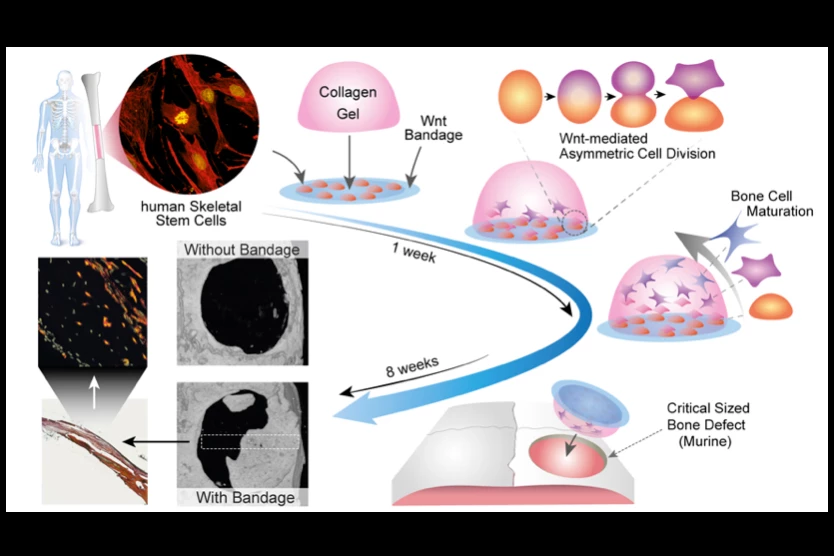For some time now, we've heard about scaffolding-like materials that are implanted into bone fractures, prompting the body's own bone cells to grow into them and heal the break. Now, however, scientists have developed a special bandage that may also do the job.
Developed by a team at King's College London, the "bone bandage" is made of a flexible, biocompatible, biodegradable material, which is coated in a protein that naturally prompts growth and repair in the body. When that bandage is surgically implanted onto the break site in a bone, it reportedly boosts the healing time considerably. Once the bone has healed, the bandage harmlessly dissolves, getting absorbed by the body.
To boost its effectiveness even further, the material can also be loaded up with a three-dimensional collagen gel containing bone cells that were grown (in the lab) from the patient's stem cells. In that case, the bandage is actually inserted into the fracture. The gel then supports the cells as they grow and fill in the break.

According to the scientists, their bandage could allow broken bones to heal considerably faster than the scaffolding implants which the patient's bone cells gradually grow into. This is because after experiencing a serious injury, such as a bone break, the body's ability to heal is often compromised.
The technology has already been successfully tested on mice, with human clinical trials now being planned. A paper on the research, which was led by Dr. Shukry Habib, was recently published in the journal Nature Materials.
And as a side note, scientists at North Carolina's Duke University are developing a bone-healing bandage of their own. Theirs, however, works by absorbing a healing biochemical produced by the body, keeping it at the wound site so it can do more work.
Source: King's College London




